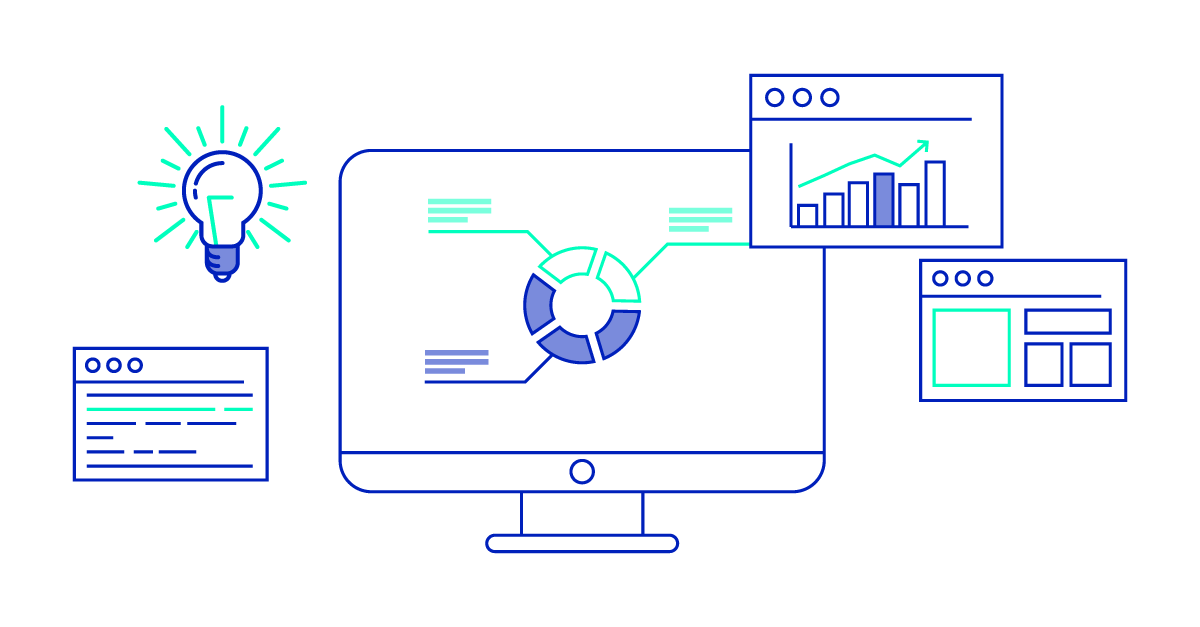With vast amounts of information accessible at a single click, organizations can draw powerful insights and create transformative experiences for individuals, customers, and businesses alike. Making the most out of data requires resources to refine and process large amounts of information to understand the true value contained within. Just as oil sitting in the ground can’t be fully utilized until it’s extracted from the earth and turned into another form such as gas or plastic, data that isn’t fully taken advantage of is a waste of a major asset that could otherwise be used for significant business purposes. Many retail and supply chain companies that aren’t maximizing the value from enriching data are missing out on opportunities to grow, optimize or manage risk. From geographic information to purchasing history, data presents retailers and supply chain providers with a powerful opportunity to extract insights about business activity, customer behavior, and other trends. And because different kinds of data can be valuable in a wide variety of applications, even information that seems to have no immediate use to a company can generate benefits for other organizations that need it. Using data to assess current business practices, identify new opportunities, and maximize efficiency can put serious money back in the pocket of any retailer or supply chain provider. Here are ten effective ways to monetise data generated throughout the retail industry and supply chain:



1. Retail analytics
Retail analytics covers all the crucial analysis and data that helps retailers make better decisions, across inventory, demand, customer behavior, sales, marketing, the supply chain and much more. Driving insights through these metrics allows for more informed choices about future trends and how best to take advantage of them. Utilizing information that’s already at the fingertips of any store, fulfillment center, or manufacturer, companies can run leaner operations, offer better product selections, and anticipate demand throughout the year. All of this makes a valuable contribution to monetization, and therefore the bottom line.
2. Improved marketing
Advertising is no longer a game controlled by powerful Madison Avenue types. Digital marketing tools have empowered brands and organizations of any size to reach customers across a wide variety of platforms, eliminating expensive middlemen to speak directly to an intended audience. Over the last few years, these digital marketing tools have come on in leaps and bounds, in particular using detailed analytics and AI to support highly personalized communications and experiences. Such is the effect that personalization is having that it’s becoming a basic expectation in retail rather than just a trend-setting differentiator. Retailers that can’t get personalized buying journeys right will lose customers to competitors who can.3. AI and MLOps
The use of artificial intelligence and machine learning continues to expand at pace. For example, according to Gartner, 55% of businesses had Generative AI either in production or in pilot mode as of October 2023, up from just 19% six months previously. AI can make a real difference in the retail marketplace on several different fronts, on top of the opportunities for personalization mentioned earlier. AI also enables more flexible logistics and supply chains, making it easier and faster to right-size inventory to demand, and ensure that the right products are available to the right people at the right times. It also enables more proactive and market-leading offers and campaigns, based on the findings of predictive analytics.
4. Fraud detection
Monetizing data doesn’t just mean driving more profits: it means reducing losses, too. One way of achieving that is to reduce the risk of fraud, which can be a common threat to any retailer, both internally and externally. Every data point is an opportunity to analyze behavior and patterns, and potentially spot fraudulent activity. This could be purchasing and accounts data, employee shifts and warehouse movements, or the video and audio recordings within the store. All this data - combined with analytical capabilities - empowers retailers to conduct much more detailed and informed investigations, and root out cases of fraud before they do too much financial damage.5. Geolocation targeting
Reaching a customer when they’re ready to make a purchase can help close the sale. Geolocation data enables retailers to add moments of connection to in-store shopping experiences, sending product information directly to a customer’s mobile device. By implementing capabilities that can send personalized discounts or point to the direct location of an item in a store, location data can bring forth new opportunities to sell products and create better retail experiences.
6. Improved business cooperation
Because retail companies and supply chain providers work in concert with each other to fulfill customer needs, it’s important for partner companies to speak a shared language. Boosting the level of cooperation between manufacturers, stores, and vendors can turn data into cost savings throughout the entire supply chain.7. Higher customer satisfaction
Keeping customers happy keeps them coming back. Identifying new ways of boosting customer satisfaction is a smart long-term strategy to ensure that customers are able to find, purchase, and receive products without pain or friction. Because data makes it possible to better understand customer needs, retail and supply chain companies can greatly improve the customer journey by extracting valuable insights from how customers interact with a company. Data can also be taken advantage of by a comprehensive CRM system, which allows brands to build long-term relationships with new and existing customers.
8. Traffic and density planning
For brands with a physical retail presence, location, and layout can help define the success of a store. Shopping and vendor data can be used for traffic, density, and location planning, ensuring companies build ideal locations well-situated to customer needs. Every additional data point that helps suggest a better retail experience can help create a positive retail experience and smooth logistics operation.9. IoT devices
From the store to the warehouse floor, improved visibility into the flow and storage of goods allows retail and supply chain companies to better track and analyze inventory. Sensors, trackers and other connected Internet-of-Things (IoT) devices can produce real-time data about an item’s location, shipment status, and availability. Optimizing retail operations using IoT devices makes it possible for retailers and supply chain companies to cut costs and boost customer satisfaction.10. Sell data to companies in other industries
Data generated by retailers and supply chain providers can provide a wide range of insights into consumer behavior and logistics. This information isn’t just valuable to the companies that produce it: additional industries looking to bolster their analytic capabilities may have a use for existing data sets or information that otherwise doesn’t appear to be of immediate use. Selling relevant information — with a keen eye towards data security and privacy rights — can generate additional revenue from work that’s already being carried out.In summary
In the months and years ahead, data will reinforce its position as the lifeblood of modern retail, and one of the biggest ways of driving better customer experiences, differentiation and therefore competitive advantage. But the pace of advancing technology around data and analytics, and the specialist know-how that is increasingly required, means that many retailers will need the help of an expert partner to keep up.Working with Ciklum gives you the chance to leverage AI, ML and Process Automation, break down legacy data silos and create a modern data platform. Along with embedded AI and ML products, and our status as an end-to-end IoT service provider, we have all the solutions and expertise you need to drive your retail business forward with data. Learn more about what we do and how we do it here.
































